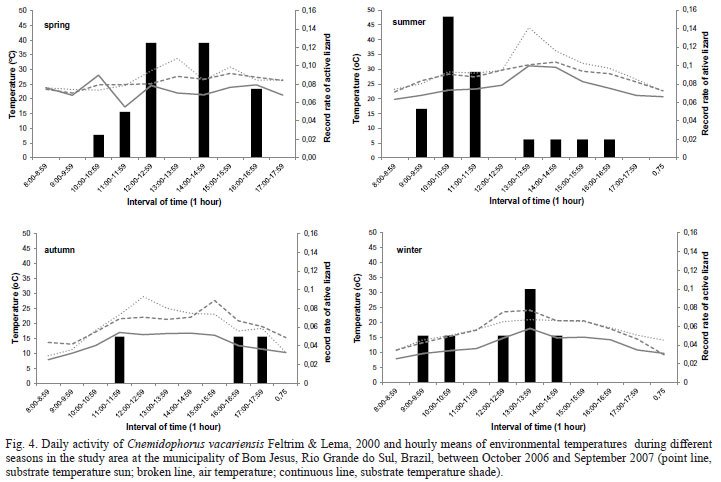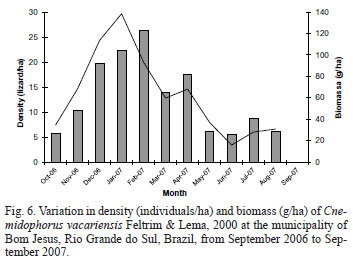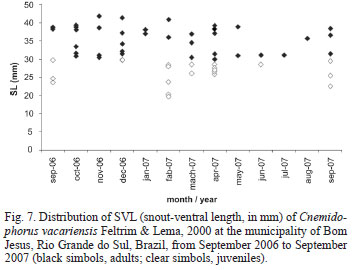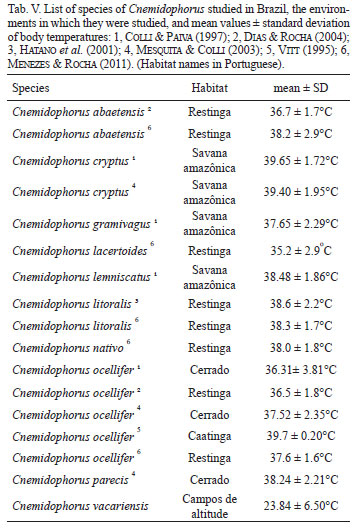We investigated the following aspects of the biology of a population of Cnemidophorus vacariensis Feltrim & Lema, 2000 during the four seasons: thermal biology, relationship with the thermal environment, daily and seasonal activity, population structure and growth rate. Cnemidophorus vacariensis is restricted to rocky outcrops of the "campos de cima da serra" grasslands on the Araucaria Plateau, southern Brazil, and is currently listed as regionally and nationally threatened with extinction. Data were collected from October 2004 through September 2007 in the state of Rio Grande do Sul. Sampling was conducted randomly from 08:00 a.m. to 6:00 p.m. The capture-mark-recapture method was employed. The lizards were captured by hand, and their cloacal temperature, sex, snout-ventral length (SVL), mass, and the temperature of their microhabitat (substrate temperature and air temperature) were recorded. Individuals were then marked by toe-clipping and released at the site of capture. Body temperatures were obtained for 175 individuals, activity data for 96 individuals, and data on population structure and growth for 59 individuals. All data were obtained monthly, at different times of the day. Cnemidophorus vacariensis average body temperature was 23.84ºC, ranging between 9.6 and 38.2ºC. Temperatures ranged between 21 and 29ºC. The correlation between external heat sources, substrate and air were positive and significant and there was a greater correlation between lizard's temperature and the temperature of the substrate (tigmothermic species). The relatively low body temperatures of individuals are associated with the climate of their environment (altitude up to 1,400 m), with large variations in temperature throughout the day and the year, and low temperatures in winter. The average body temperature observed for C. vacariensis was low when compared with that of phylogenetically related species, suggesting that the thermal biology of this species reflects adaptations to the temperate region where it lives. The monthly rates of activity of lizards were related to monthly variations in the ambient temperatures. Our data suggest that the daily and seasonal activity of C. vacariensis result from the interaction between two factors: changes in the environment temperature and the relationship between individuals and their thermal environment. The population structure of C. vacariensis varied throughout the study period, with maximum biomass in January and maximum density in February (recruitment period). The sex ratio diverged from the expected 1:1. The growth analysis showed a negative relationship between the growth rate of individuals and the SVL, revealing that young individuals grow faster than adults, a typical pattern for short-lived species. The population studied showed a seasonal and cyclical variation associated with the reproductive cycle. The life strategy of C. vacariensis seems to include adaptations to the seasonal variations in temperature, typical of its environment.
Body temperature; growth; density-biomass; temperate region; tigmothermy











